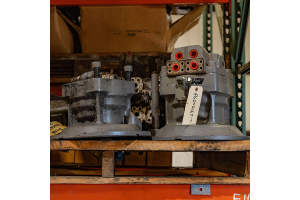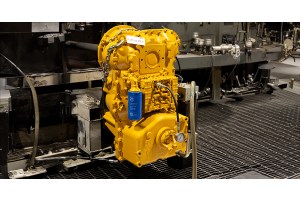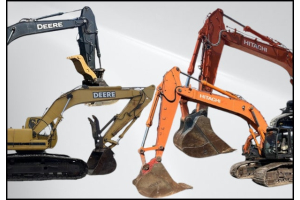Construction worksite safety training is moving into the world of virtual reality thanks to Caterpillar Safety Services. CSS has announced the development of a VR safety training module. Customized for paving applications, the VR technology takes the person in training into a virtual construction site on a four-lane highway.
When in the virtual world, the trainee can interact with co-workers and identify hazards in the digital environment. On a real job site, there are many hazards and distractions that can lead to serious injuries. Real world mistakes lead to tens-of-thousands of traffic accidents and hundreds of deaths every year in the US. A mistake in virtual reality leads to a program reset.
The goal is to provide in-depth training related to specific hazards, teach the importance of following proper procedures, and teach communication amongst workers.
“Given the industries we serve, and the hazards workers face in those industries, having a safe alternative to real world training is important. As the workforce evolves generationally, so does the way in which training is delivered. VR is an engaging learning experience for all, and numerous studies have shown memory retention to be higher with VR than through more traditional training methods,” says Zach Knoop, Caterpillar Safety Services general manager.
“We developed this safety training module for one of our long-time customers, who is a world leader in the construction and maintenance of transport infrastructure. However, the program can be adapted to meet the needs of specific customers, industries and applications.”
CAT officials say the Cat Safety VR comes complete with everything a company needs to conduct the safety module. The kit includes a gaming laptop preloaded to run the program, HTC VIVE virtual reality headset system including hand controls, a mount stand kit and a transport case. The system is easy to transport.
Once putting on the VR headset, the trainee is immersed in the virtual four-lane highway project. They get to fly over the work site and have a pre-shift “huddle” with coworkers. A series of five scenarios then plays out during the training session, which is designed to show workers potential hazards crews face paving a highway next to live traffic.
After receiving instructions from the foreman, the user performs certain tasks. Virtual reality scenarios show employees how important it is to focus when working around unpredictable traffic, blind spots, moving equipment and other factors. As the module progresses, another setting features an excavator and coworker using a concrete saw to teach the importance of always wearing the proper personal protective equipment or PPE.
As trainees make decisions there is positive reinforcement for correct actions. There is also negative consequence for choices that are unsafe. The training module concludes with a daily wrap-up to reinforce lessons learned. The total program run time is approximately 20-30 minutes per session.
“Cat Safety VR helps the trainee learn how to interact with coworkers, other contractors and the equipment, all in a safe and controlled environment,” comments Justin Ganschow, Caterpillar Safety Services business development manager. “For both new and experienced employees, VR is an effective and memorable experience to support the company’s overall safety training program and advances the safety culture.”
[embed]https://www.youtube.com/watch?v=C6inwfLUXZ4[/embed]









